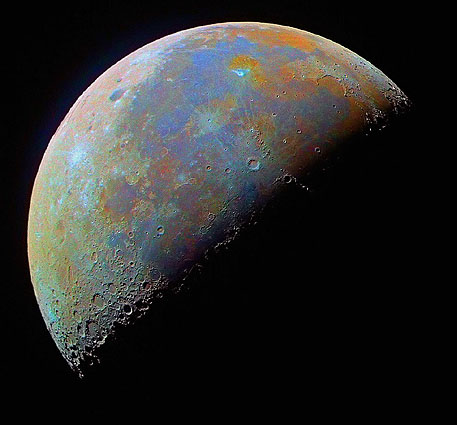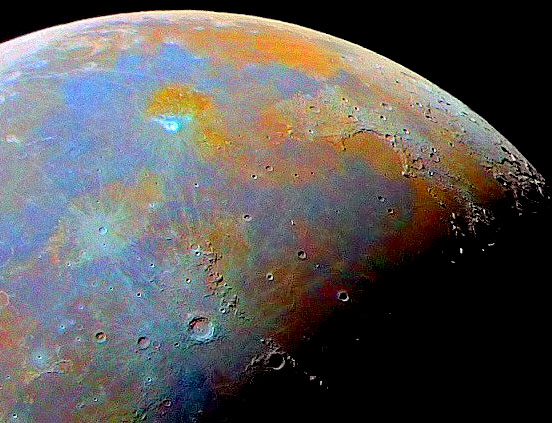December 20, 2004
Bi-Colored Moon
Image Credit: Filipe Aves |
|
Bi-Colored Moon Early this year, Portuguese imager Filipe Aves demonstrated that a normal digital camera can capture the subtle colors of the lunar surface and that relatively simple processing can enhance them. Filipe's latest image reflects his continuing refinement of the technique, including stacking images to reduce noise and increase color saturation. In this image the Moon is largely two colors - blues and oranges. But look closely for this bi-coloration isn't just the mare-highlands compositional dichotomy. Within Mare Imbrium and nearby Oceanus Procellarum (see mouseover) both these colors appear. The blues are generally younger basalts that are titanium rich, and the oranges are older, Ti-poor lavas. Lighter-hued golds also appear in the highlands but these are not basalts. The Galileo color composite image - made with a billion dollar spacecraft and separate filtered images - distinguishes the highlands from the Ti-poor basalts. Other amateurs should explore this technique - Felipe's web site shows you how - using high resolution images to investigate the details of lava flows and topography. For example - do domes or sinuous rilles occur preferentially in lavas of certain colors/compositions? Technical Details: Related Links: Yesterday's LPOD: Half Moon in Broward Tomorrow's LPOD: Full Moon and High Res |
|
Author & Editor: |
COMMENTS?
Register, Log in, and join in the comments.





